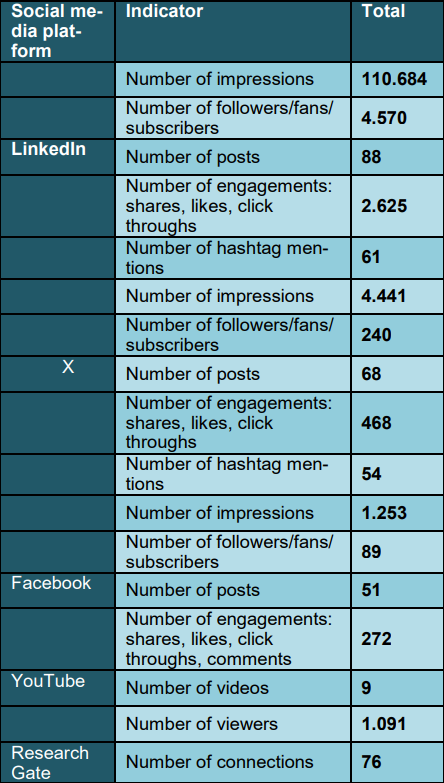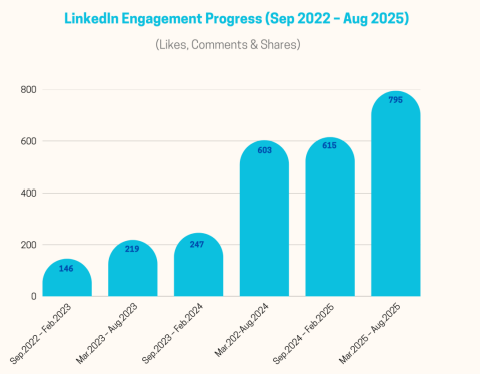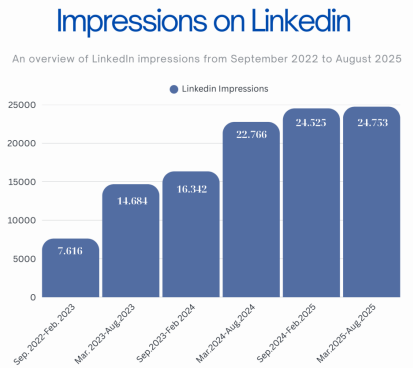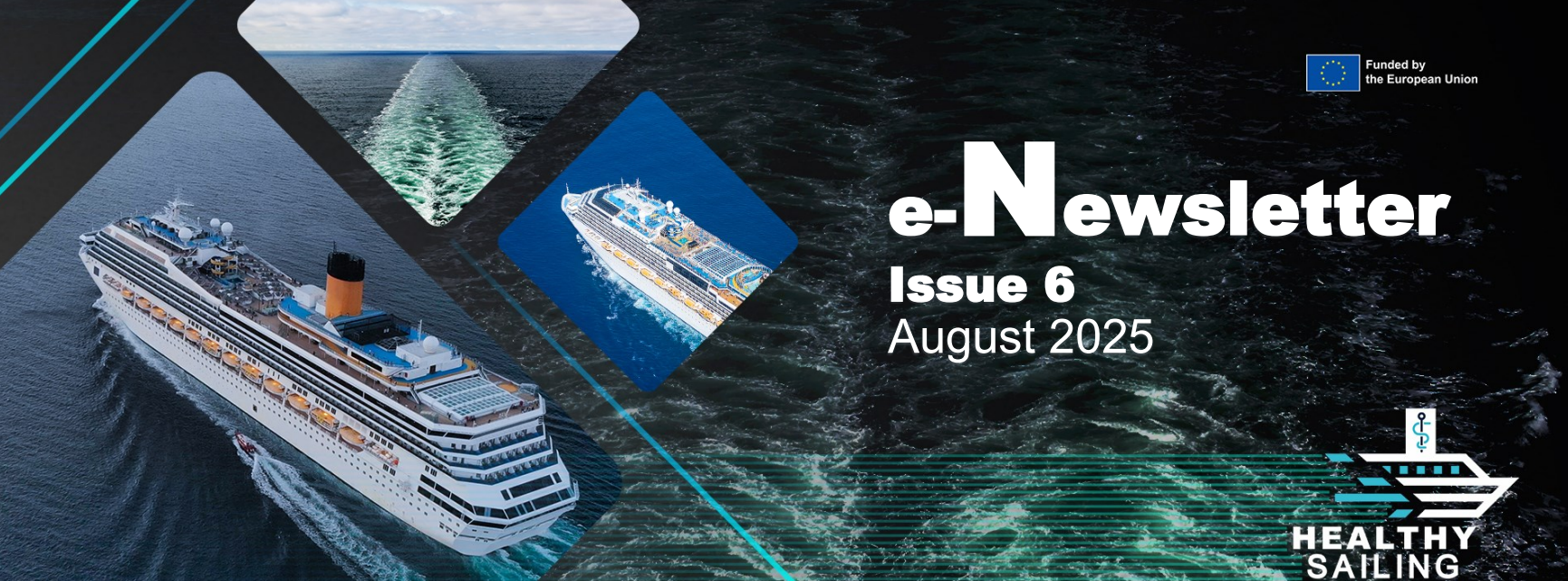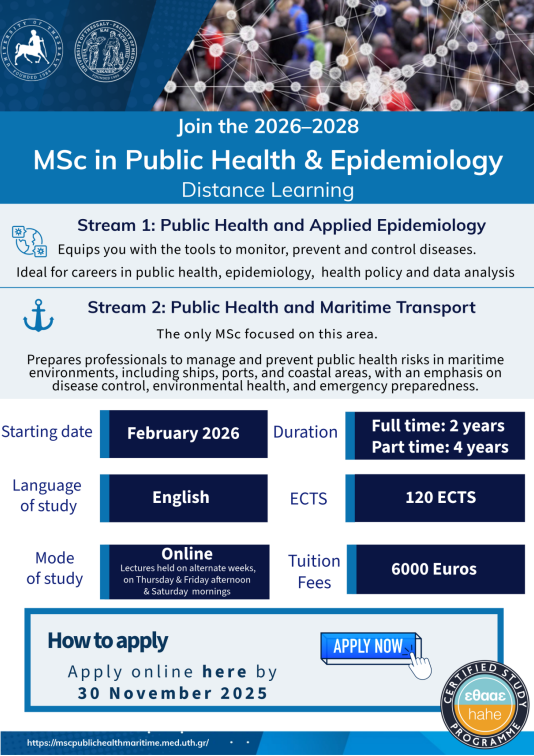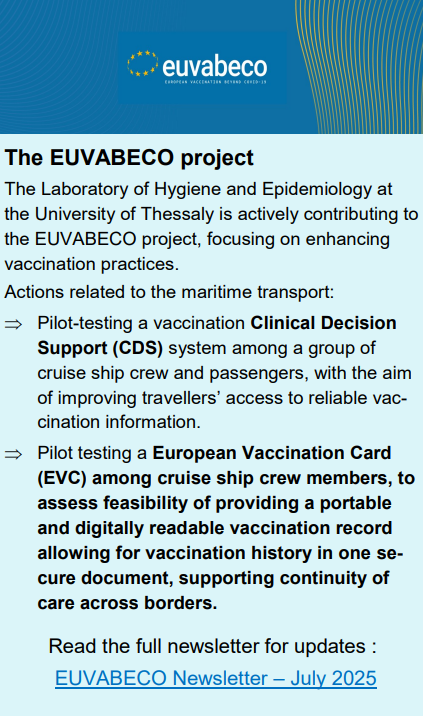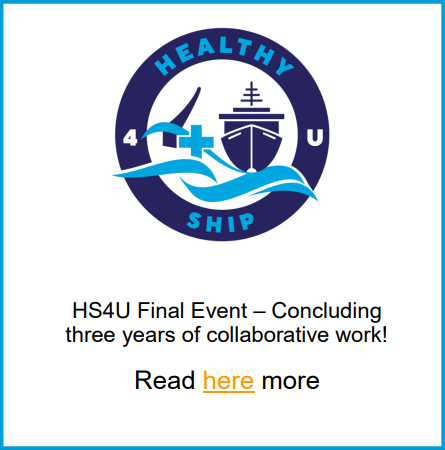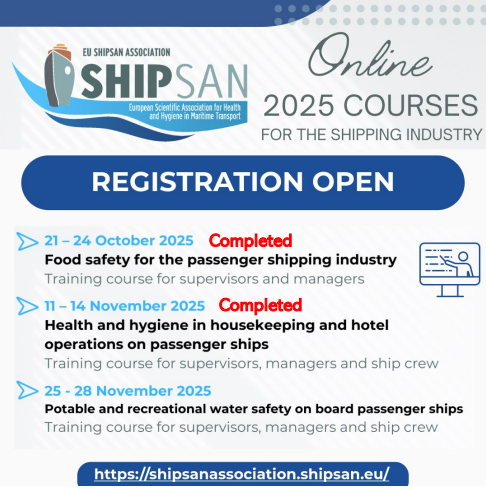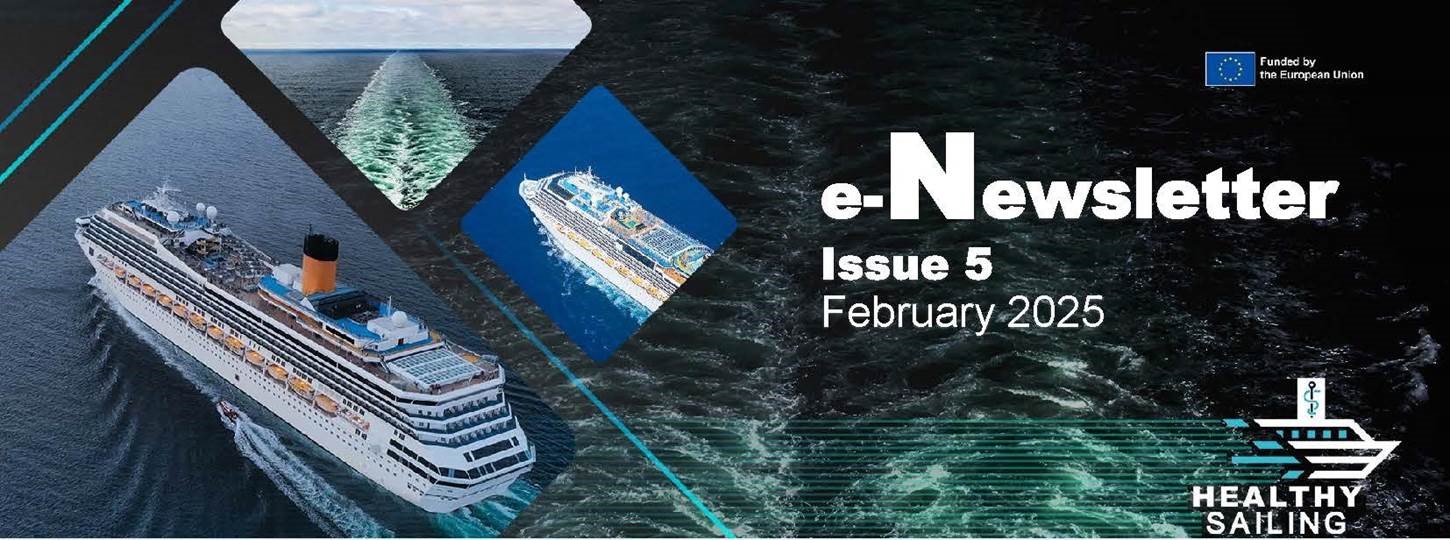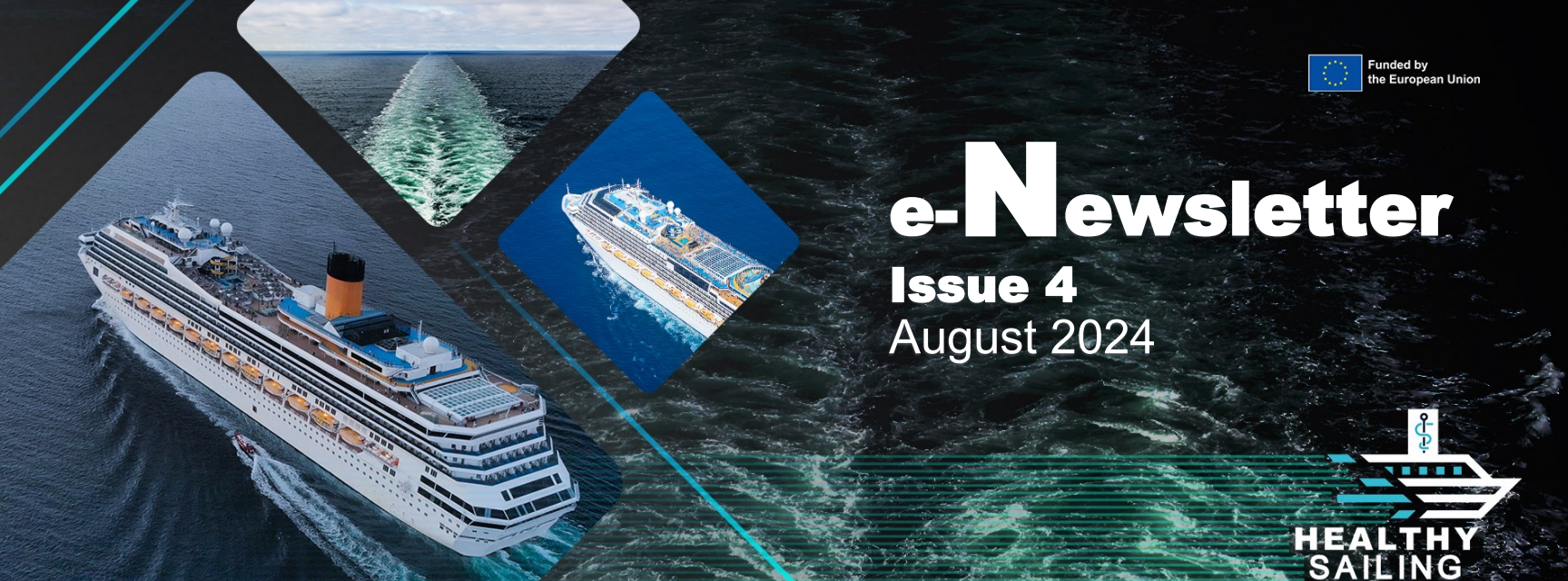
HEALTHY SAILING Project Status Update
Updates from the Coordination
The Healthy Sailing project has been granted a six-month extension, with activities now continuing until February 2026, and has officially entered its final phase of implementation. This extension provided the consortium with valuable access to cruise ships during the 2025 summer season, enabling the completion of onboard intervention studies, pilot testing, validation, and the refinement of technological prototypes and guidelines. As we approach the conclusion of the project, this closing stage is a vital opportunity to consolidate achievements, strengthen collaboration, and ensure that the outcomes delivered leave a lasting impact. While this is the project’s final newsletter, we will continue sharing updates, results, and highlights of our impact through our social media channels and website in the months ahead.
Status of project deliverables and tasks
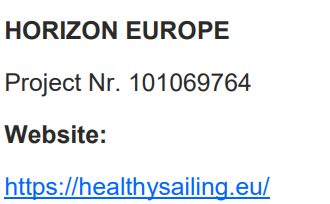 As of September 2025, a total of 22 out of 35 project deliverables have been submitted, while 5 out of 7 milestones have been achieved. The completion percentage of work packages is nearly 79% for the 7 project work packages. From September 2022 to September 2025, nearly 304 technical and scientific meetings (internal and external) were conducted.
As of September 2025, a total of 22 out of 35 project deliverables have been submitted, while 5 out of 7 milestones have been achieved. The completion percentage of work packages is nearly 79% for the 7 project work packages. From September 2022 to September 2025, nearly 304 technical and scientific meetings (internal and external) were conducted.
Save the Date: Final Conference
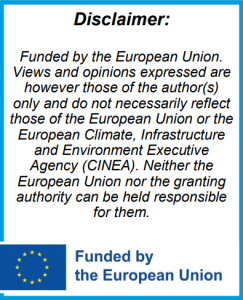 The project’s Final Conference will take place in February 2025 as a hybrid event, bringing together stakeholders both in person in Larissa, Greece and online. The exact date will be announced soon. This will be a key moment to showcase achievements, discuss policy implications, and highlight the project’s contribution to European public health and innovation.
The project’s Final Conference will take place in February 2025 as a hybrid event, bringing together stakeholders both in person in Larissa, Greece and online. The exact date will be announced soon. This will be a key moment to showcase achievements, discuss policy implications, and highlight the project’s contribution to European public health and innovation.
Objectives of the Final Conference:
• Present the project’s main results, tools, and policy recommendations.
• Facilitate dialogue between researchers, industry, policymakers, and public health practitioners.
• Explore opportunities for uptake and sustainability of project outcomes beyond the funding period.
NEWSLETTER SUBSCRIPTION
Subscribe to the HEALTHY SAILING eNewsletter: https://healthysailing.eu/category/newsletters/
If you are already subscribed to our newsletter and you would like to unsubscribe, you may do so by clicking here or by sending us an email to the following address: it[at]healthysailing.eu
This is a biannual publication of the HEALTHY SAILING project. Next issue: August 2025
Follow us on Social Media:
LinkedIn
Twitter
Facebook
YouTube
ResearchGate
Publications, Dissemination & Communication activities
Article in journal
Infectious diseases on passenger ships: Port preparedness and response – A narrative systematic review
Johannes A. Neumann, Jette Zimmermann, Marie Frese, Martin Dirksen-Fischer, Scarlett Kleine-Kampmann, Volker Harth, Jan Heidrich, the EU HEALTHY SAILING project
Travel Medicine and Infectious Disease, Volume 67, 2025, 102886, ISSN 1477-8939, https://doi.org/10.1016/j.tmaid.2025.102886.
Abstract
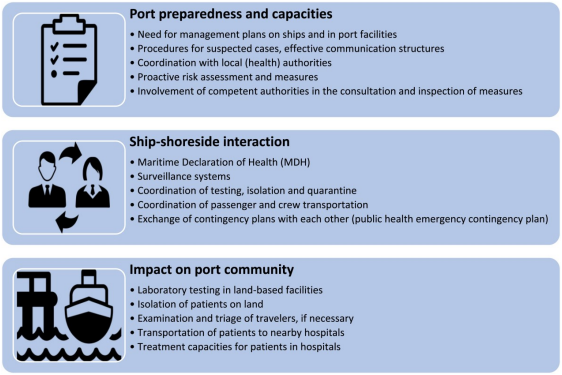 Background:Ships are environments conducive to the spread of infectious diseases among passengers and crew members. In this context, it is essential to establish effective prevention and control measures to protect the health of passengers and crew members while ensuring that shipping minimizes its contribution to the global spread of disease via ship-to-shore interactions. The aim of this review is to provide knowledge on the impact of infectious diseases on board large passenger ships on the port, the port community and other land-based operations.
Background:Ships are environments conducive to the spread of infectious diseases among passengers and crew members. In this context, it is essential to establish effective prevention and control measures to protect the health of passengers and crew members while ensuring that shipping minimizes its contribution to the global spread of disease via ship-to-shore interactions. The aim of this review is to provide knowledge on the impact of infectious diseases on board large passenger ships on the port, the port community and other land-based operations.
Methods: A systematic literature review was conducted, searching the PubMed, Scopus and Cochrane Library databases and including additional articles from hand searches up to July 2024. Peer-reviewed studies of infectious disease outbreaks related to large passenger ship travel that described ship-shore interaction, port preparedness and impact on the port community were included. Article selection and data extraction were conducted by two independent reviewers.
Results: A total of 593 publications were initially identified, with 23 articles included in the analysis. Most studies reported COVID-19 outbreaks on cruise ships; other communicable diseases reported were influenza, gastroenteritis, and varicella. The articles highlighted the importance of comprehensive management plans and proactive risk assessment during infectiousdisease outbreaks that impact ship-to-shore interactions.
Conclusions: Effective stakeholder collaboration, ship-to-shore communication, coordination of diagnostic testing and medical transport, isolation, and quarantine measures are essential components of infectious disease prevention, mitigation, and management in passenger shipping within the port environment.
Read full article here
Article in journal
Mitigating norovirus spread on cruise ships: a model-based assessment of diagnostic timing and isolation
Alfredo De Bellis, PhD, Andrea Bizzotto, MSc, Lemonia Anagnostopoulos, MPH, Leonidas Kourentis, MPH, Valentina Marziano, PhD, Varvara Mouchtouri, PhD, Stefano Merler, MSc, Giorgio Guzzetta, PhD Journal of Travel Medicine, taaf059, https://doi.org/10.1093/jtm/taaf059
Abstract
Background
Acute gastroenteritis outbreaks caused by noroviruses are a common public health issue on cruise ships. Understanding the main drivers of sustained outbreaks is critical for evaluating the effectiveness of preventive interventions such as the isolation of infected individuals.
Methods
We analysed a line-list of 121 cases from a norovirus outbreak on a cruise visiting Mediterranean ports (cumulative incidence among passengers 9.7%). We used a Bayesian inference model to reconstruct likely transmission chains, taking into account different transmission settings and the isolation of cases after diagnosis. We then calibrated a branching process model to simulate alternative isolation scenarios and estimate their effectiveness in reducing transmission.
Results
Reconstructed transmission chains revealed a high heterogeneity in individual transmission, with 57% [95% credible interval (CrI): 48–65%] of secondary cases caused by 10% of infected individuals (here termed ‘superspreaders’). Superspreaders exhibited longer diagnostic delays (mean 83 hours, 95% CrI: 70–96 hours) compared to other infectors (mean 47 hours, 95% CrI: 44–50 hours) and a halved frequency of vomiting and diarrhoea episodes. The 72-hour isolation protocol implemented during the outbreak averted 71% of potential cases compared to a no-intervention scenario, halving the effective reproduction number from 9.8 (95% CrI of the mean: 7.1–12.7) to 4.9 (95% CrI: 3.0–7.1). Reducing diagnostic delays further reduced the effective reproduction number, resulting in lower case numbers and probability of sustained outbreaks.
Conclusions
Timely diagnosis and isolation have a remarkable impact on norovirus containment on cruise ship outbreaks. Targeted information campaigns encouraging passengers to seek immediate medical assistance upon gastrointestinal symptoms can significantly improve outbreak management.
Read full article here
Article in journal
Airborne pathogen monitoring and dispersion modelling on passenger ships: A review
Prashant Kumar, Sarkawt Hama, Ho Yin Wickson Cheung, Christos Hadjichristodoulou, Varvara A. Mouchtouri, Lemonia Anagnostopoulos, Leonidas Kourentis, Zhaozhi Wang, Edwin R. Galea, John Ewer, Angus Grandison, Fuchen Jia, Niko Siilin.
Science of The Total Environment, Volume 980, 2025, 179571, ISSN 0048-9697, https://doi.org/10.1016/j.scitotenv.2025.179571
Abstract
The COVID-19 pandemic demonstrated a profound inability of prepandemic passenger ship policies implemented by both ship operators and governmental authorities to detect and address newly emerging diseases. The essentiality of maritime transport puts into focus the risk of approach to address known and new emerging airborne infectious diseases that, due to increasing capacity, are likely to occur on passenger ships. In order to enhance the passenger experience, prepare shipping for pandemics like COVID-19, and improve the resilience and safety of the industry, this review critically synthesises existing literature on (1) monitoring ventilation conditions and aerosol dispersion, linking them to airborne transmission risk using airborne aerosols and ventilation performance as input parameters for computational fluid dynamics (CFD) simulations, and (2) modelling airborne disease transmission risk in controlled passenger ship environments. This review analysed 39 studies on aerosol monitoring, thermal comfort, and infection risk modelling on passenger ships (2000−2023). Additionally, 55 papers on CFD modelling of airborne pathogen dispersion were reviewed: 22 included validation, with most focused on built environments and only four specifically addressing ship environments. Two major challenges relate to the complexity and 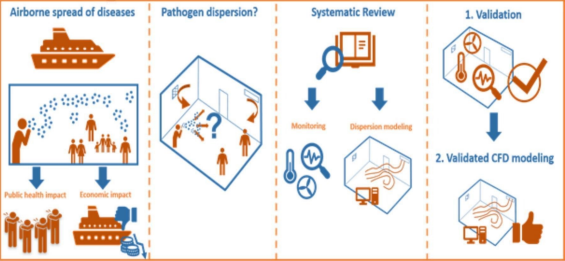 poorly characterised ventilation boundary conditions on passenger ships, and the other is the lack of suitable validation data. For this reason, ship experimental studies are required for CFD model validation. Only a handful of studies were found that have measured aerosol concentrations on board passenger ships. To the best of our knowledge, there have been no studies conducted on aerosol mass or airborne transmission sampling on board passenger ships or other types of vessels. The results of this review have the potential to create synergistic connections between experimental and modelling studies to inform, characterise and improve the development of numerical models that can accurately estimate infection risk on ships for prevention, mitigation and management of outbreaks.
poorly characterised ventilation boundary conditions on passenger ships, and the other is the lack of suitable validation data. For this reason, ship experimental studies are required for CFD model validation. Only a handful of studies were found that have measured aerosol concentrations on board passenger ships. To the best of our knowledge, there have been no studies conducted on aerosol mass or airborne transmission sampling on board passenger ships or other types of vessels. The results of this review have the potential to create synergistic connections between experimental and modelling studies to inform, characterise and improve the development of numerical models that can accurately estimate infection risk on ships for prevention, mitigation and management of outbreaks.
Read full article here
Article in journal
Forecasting norovirus cases on cruise ships to support outbreak management on board
Andrea Bizzotto, Alfredo De Bellis, Valentina Marziano, Varvara A. Mouchtouri, Leonidas Kourentis, Lemonia Anagnostopoulos, Christos Hadjichristodoulou, Stefano Merler, Giorgio Guzzetta
Travel Medicine and Infectious Disease, Volume 65, May–June 2025, 102850
Abstract
Background: Norovirus outbreaks on cruise ships are a significant threat to the cruising industry. Mathematical models have the potential to leverage routinely collected syndromic surveillance data on board to provide insight into outbreak evolution.
Methods: We used historical data from seven norovirus outbreaks occurred in 2011–2013, totalling 359 diagnosed cases, to assess the performance of automated forecasts in realtime. We compared the performance of a set of alternative models on three endpoints (the number of cases by symptom onset time, by diagnosis date, and the total number of cases until the end of the cruise), using the logarithmic score (logS), the ranked probability score (RPS), and the 95 % coverage.
Results: We found that the best forecasting performance was given by a model that includes both superspreading and the effect of case isolation. This model had in most cases a better score than that of a baseline model assuming constant incidence; this happened in 59–70 % of data points when assessed
using the logS and 53–57 % with the RPS (depending on the considered endpoint). The best model also had the highest coverage over all endpoints. Its added value was especially evident for longer forecasting horizons, with an improvement in performance for up to 78 % of data points, both according to the logS and the RPS.
Conclusions: Simple mathematical models integrating key mechanisms of norovirus transmission can help predict the number of cases on board. This knowledge can be automatized in syndromic surveillance systems to support decision making for the management of outbreaks.
Read full article here
Healthy Sailing Project at the Clean Water and Clean Air Conference (CWCC 2025)
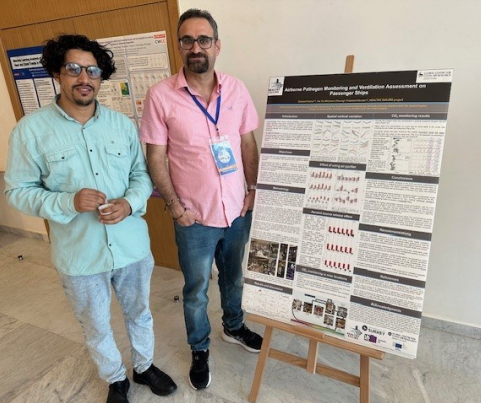 We are pleased to announce that the Healthy Sailing Project was represented at the Clean Water and Clean Air Conference (CWCC 2025), held at UM6P, Morocco, from October 14–16, 2025.
We are pleased to announce that the Healthy Sailing Project was represented at the Clean Water and Clean Air Conference (CWCC 2025), held at UM6P, Morocco, from October 14–16, 2025.
Dr. Sarkawt Hama, Research Fellow at the Global Centre for Clean Air Research (GCARE), University of Surrey, presented our research poster entitled: “Airborne Pathogens and Ventilation Assessment on Ships.”
This work is part of our aim to provide practical recommendations for optimizing ventilation operations in passenger ships, contributing to a safe sailing environment and resilience for future pandemics.
The conference offered a valuable opportunity to connect with international experts in environmental health,
water, and air quality, and to highlight the importance of creating safer and healthier maritime transport systems.
New educational video
Preventing Infection Onboard – Hand Hygiene Tips For Cruise Ship Crews
We’re excited to share this insightful video that dives into Preventing Infection Onboard – Hand Hygiene Tips For Cruise Ship Crews.
Click here to watch
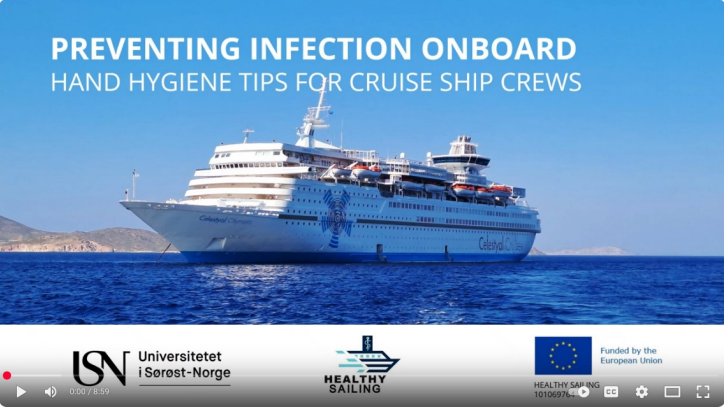
Three-Week Intervention on improving cleaning and disinfection of cabins and public toilets
Between 10 June and 1 July 2025, the HEALTHY SAILING project carried out an intensive three-week training and research program onboard MSC Sinfonia, focusing on strengthening cleaning and disinfection practices to prevent the spread of infectious diseases. The intervention combined research, training, and innovation:
• Knowledge, Attitudes, Practices (KAP) survey to capture baseline understanding.
• Observation checklists completed by researchers during cleaning tasks.
• Sampling of environmental surfaces, cleaning items, and personnel’s hands and gloves, both before and after cleaning and disinfection.
• Training with the HEALTHY SAILING Standard Operating Procedures (SOPs), which included:
▪ In-classroom face-to-face training
▪ Pre-recorded video training
▪ Augmented Reality (AR) training
▪ On-the-job training (Job Instruction Training, JIT) in the actual work environment
Special attention was given to WHO-recommended hand hygiene techniques and the correct use of personal protective equipment (PPE), supported by live demonstrations and hands-on practice.
To enrich data collection, RFID tags were installed in two public toilets. These sensors tracked the frequency and duration of cleaning activities, offering valuable insight into adherence to the SOPs.
During and at the end of the voyage, all baseline assessments were repeated, allowing before-and-after comparisons of practices and microbial load. Participants also shared their feedback, highlighting the effectiveness of the training and identifying areas for improvement.


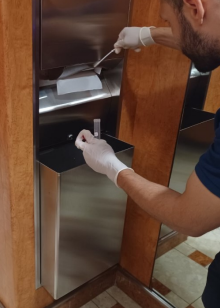
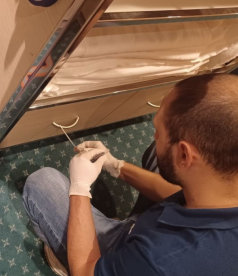
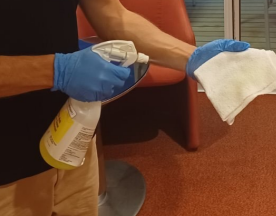
Filming Training Videos Onboard MSC Sinfonia
As part of the HEALTHY SAILING project, teams from the National and Kapodistrian University of Athens (NKUA) and the University of Thessaly (UTH) were onboard MSC Sinfonia on 8 July and 15 July 2025 to film two new training videos.
The first segment focused on “Checking the operation and calibration of a chlorinator analyser and chart recorder”, supported by the Hotel Maintenance Engineer. This demonstration highlights the importance of ensuring accurate monitoring of water systems onboard.
The second segment showcased “Ensuring proper dishwashing machine operation”, with valuable input from the Food & Beverage (F&B) department. This video underlines how correct equipment use is essential for maintaining high standards of hygiene and safety in food
handling.
These videos will become part of the HEALTHY SAILING training toolkit, supporting cruise ship crew members in strengthening their technical skills and applying best practices in daily operations, while also serving as a valuable resource for public health authorities and inspectors.
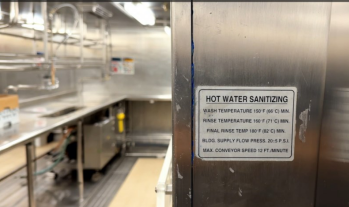

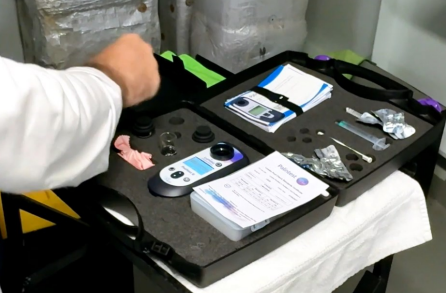
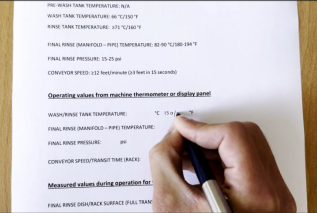
HEALTHY SAILING on MSC Armonia: RFID Pilot-testing
On 5 June 2025, under the HEALTHY SAILING project, the University of Thessaly (UTH) and Frederick University of Cyprus piloted the use of RFID (Radio Frequency Identification) technology onboard MSC Armonia to enhance monitoring of cleaning and disinfection activities. RFID tags were installed in a public toilet to track:
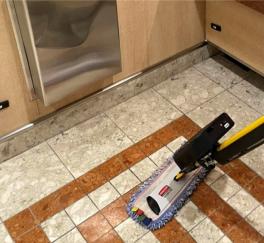 • The frequency of cleaning events
• The frequency of cleaning events
• The duration of cleaning tasks
• The movement patterns of hotel cleaners during cleaning and disinfection procedures
This innovative approach will provide researchers with real-time, objective data. The insights gained will be crucial for evaluating adherence to the new HEALTHY SAILING Standard Operating Procedures (SOPs) and will help strengthen accountability in hygiene practices. Through the joint expertise of UTH and Frederick University of Cyprus, the pilot will demonstrate that RFID can serve as a practical, scalable tool to support evidence-based infection prevention and control across the cruise industry.
Website analytics

 Since the launch of the HEALTHY SAILING website in November 2022, a total of 12629 page views, 10723 unique pageviews & 7271 visits have been recorded.
Since the launch of the HEALTHY SAILING website in November 2022, a total of 12629 page views, 10723 unique pageviews & 7271 visits have been recorded.
Social media analytics
